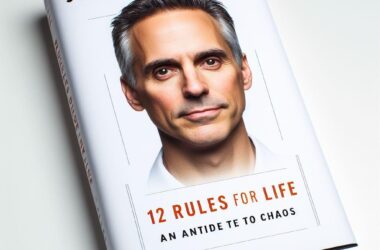Finding inner peace and purpose hyperconnected world can seem like an elusive quest. We chase external markers of success – fame, wealth, and pleasure – only to discover that true fulfillment lies within. Enter “Think Like a Monk” by Jay Shetty – a guide to cultivating a monk mindset in our everyday lives. Let’s explore the key takeaways, favorite quotes, and practical applications from this transformative book.
Key Takeaways
- Clarify Your Identity:
- Understand that you are not merely what you think or what others perceive you to be. Peel away societal conditioning and discover your authentic self.
- Embrace the monk mindset by letting go of false identities and connecting with your inner truth.
- Reverse Negativity with Spot-Stop-Swap:
- When negative thoughts arise, pause and observe them (Spot).
- Interrupt the negativity by consciously choosing a positive thought (Stop).
- Replace the negative thought with a constructive one (Swap).
- Get Intimate with Fear, Then Detach:
- Dive into your fears – understand their roots and impact.
- Detach from fear by realizing it doesn’t define you. Courage lies in facing fear head-on.
- Hone Good Intentions:
- Align your actions with positive intentions. Intentions shape your reality.
- Cultivate kindness, compassion, and empathy.
- Live Your Purpose and Dharma:
- Discover your life’s purpose – the reason you wake up each day.
- Align your actions with your dharma (duty) to create a meaningful life.
- Improve Your Routines and Habits:
- Small daily habits compound over time. Optimize them for growth.
- Create routines that nurture your mind, body, and spirit.
- Master the Mind:
- Understand the power of your thoughts. They shape your reality.
- Practice mindfulness, meditation, and self-awareness.
- Build Self-Esteem, Not Ego:
- Self-esteem comes from within; ego seeks validation externally.
- Cultivate self-love and self-acceptance.
- Practice Frequent, Specific, and Broad Gratitude:
- Gratitude shifts your focus from lack to abundance.
- Be specific about what you’re grateful for, and extend it broadly.
- Understand and Nurture Relationships Through Trust and Connection:
- Trust is the foundation of all relationships.
- Connect deeply with others by being present and authentic.
- Service Is the Direct Path to a Happy and Fulfilling Life:
- Serving others brings purpose and joy.
- Find ways to contribute to the world around you.
Favorite Quotes from “Think Like a Monk”
- “I am not what I think I am, and I am not what you think I am.”
- “The monk mindset is about living intentionally, not impulsively.”
Who Is This Book For?
- Seekers of Inner Peace: If you yearn for tranquility amidst chaos, this book is for you.
- Ambitious Professionals: Learn how to thrive without sacrificing your well-being.
- Anyone on a Journey of Self-Discovery: Whether you’re a student, parent, or entrepreneur, the monk mindset applies to all.
Applying the Insights
- Morning and Evening Routines: Start and end your day mindfully.
- Breathing Exercises: Calm your mind through conscious breathing.
- Visualization: Picture your desired outcomes.
- Mantra Chanting: Use positive affirmations.
- Detachment: Observe your thoughts without attachment.
- Service: Volunteer, help others, and make a difference.
Conclusion
“Think Like a Monk” invites us to shift our perspective, embrace simplicity, and find purpose beyond material pursuits. As we cultivate a monk mindset, we discover that true wealth lies in inner peace and meaningful connections. So, let’s embark on this transformative journey – one thought, one intention, and one act of service at a time.
And there you have it – a comprehensive blog post on “Think Like a Monk.” Feel free to adapt it to your blog, and may it inspire your readers to live with purpose and peace!




